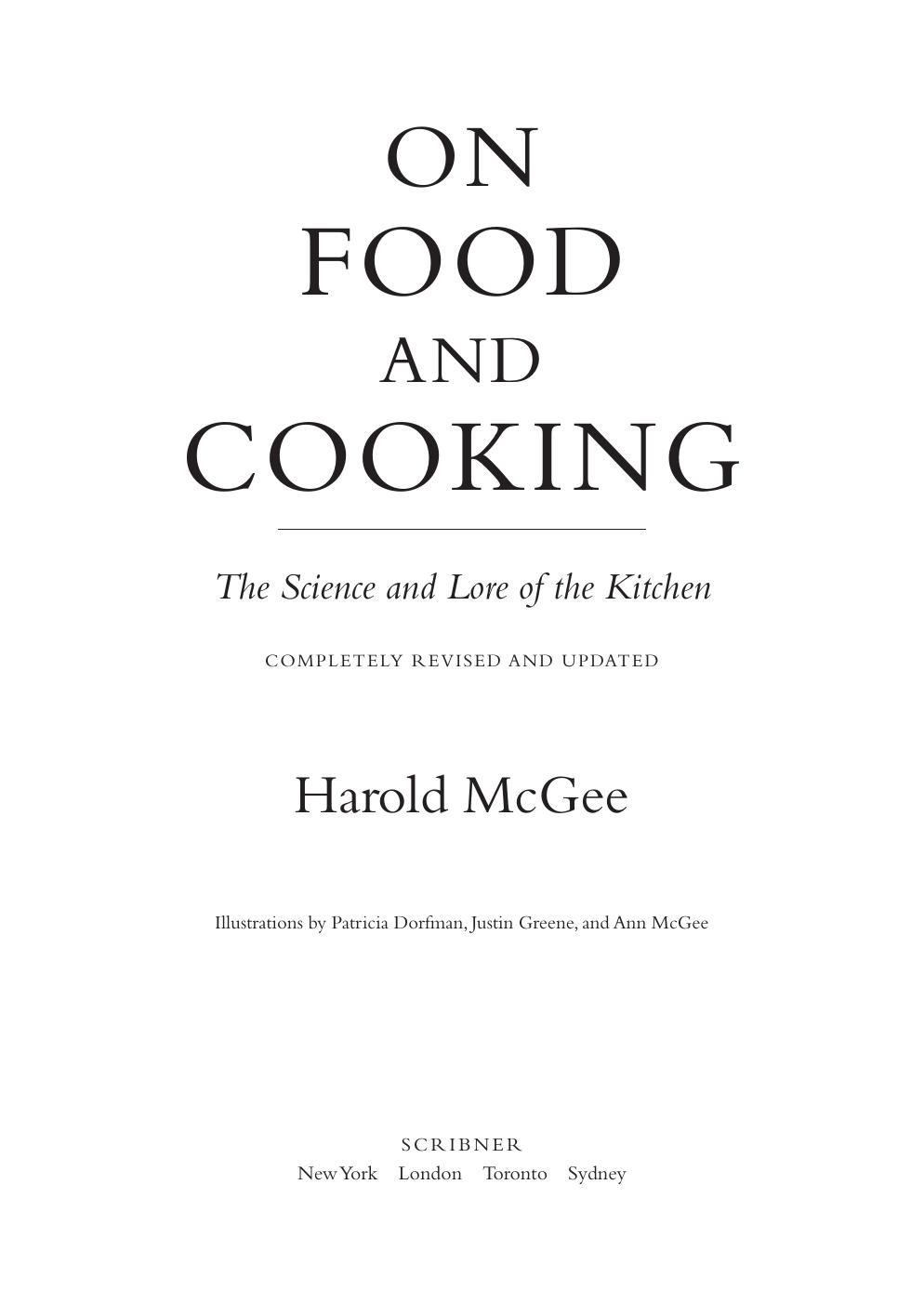On Food and Cooking by Harold McGee

Author:Harold McGee
Language: eng
Format: mobi, pdf
Tags: Food
ISBN: 9780340831502
Publisher: Hodder & Stoughton Ltd
Published: 2004-11-16T05:00:00+00:00
The Cabbage Family:
Pungent Mustards,
Horseradish, Wasabi
Of the various spices that manage to please us by causing irritation and pain, the mustards and their relatives are unique in providing a volatile pungency, one that travels from the food through the air to irritate our nasal passages as well as our mouth. The active ingredients of chillis and black pepper become significantly volatile only at high temperatures, above about 140ºF/ 60ºC, which is why roasting hot chillis or toasting peppercorns can cause everyone in the kitchen to start sneezing. But mustard and horseradish and wasabi can get into the nose even at room or mouth temperature. Theirs is a head-filling hotness.
The pungency of mustards and their relatives arises from the same chemical-defense system used by their vegetable relatives in the cabbage family (p. 321). The plants store their irritant defenses, the isothiocyanates, by combining them with a sugar molecule. The storage form is not irritating, but it does taste bitter. When their cells are damaged, special enzymes reach the storage form and break it apart, liberating the irritant molecules (and at the same time eliminating the bitterness). Mustard seeds and horseradish roots are pungent because we grind them up raw and encourage their enzymes to liberate the irritant molecules. When mustard seeds are cooked — for many Indian dishes they are toasted or fried until they pop — the liberating enzymes are inactivated, no irritants are liberated, and their flavor ends up nutty and bitter rather than pungent.
Mustards Mustard seed has been found in prehistoric sites from Europe to China, and was the first and only native pungent spice available to early Europe. It has been made into the familiar European condiment at least since Roman times; its name in most European languages comes not from the Latin name of the seed or plant (sinapis), but from the condiment, which was made with freshly fermented wine (mustum), and the hot (ardens) seeds. Different nations have distinctive prepared mustards whose roots go back as far as the Middle Ages. Mustard is also widely used as the whole seed, especially in Indian cooking, and flavors a broad range of dishes, including fruits preserved in sugar (Italian mostarda di frutta).
Black, Brown, and White Mustards There are three main kinds of mustard plants and seed, each with its own character.
Download
This site does not store any files on its server. We only index and link to content provided by other sites. Please contact the content providers to delete copyright contents if any and email us, we'll remove relevant links or contents immediately.
A Court of Wings and Ruin by Sarah J. Maas(7651)
The Death of the Heart by Elizabeth Bowen(3552)
The Sprouting Book by Ann Wigmore(3543)
Better Homes and Gardens New Cookbook by Better Homes & Gardens(3525)
BraveTart by Stella Parks(3395)
Salt, Fat, Acid, Heat: Mastering the Elements of Good Cooking by Nosrat Samin(3108)
Sauces by James Peterson(3051)
Kitchen confidential by Anthony Bourdain(3009)
The Bread Bible by Rose Levy Beranbaum(3004)
Classic by Mary Berry(2942)
Solo Food by Janneke Vreugdenhil(2929)
Ottolenghi - The Cookbook by Yotam Ottolenghi(2871)
Martha Stewart's Baking Handbook by Martha Stewart(2796)
Day by Elie Wiesel(2720)
Betty Crocker's Good and Easy Cook Book by Betty Crocker(2681)
The Plant Paradox by Dr. Steven R. Gundry M.D(2547)
My Pantry by Alice Waters(2546)
The Kitchen Counter Cooking School by Kathleen Flinn(2486)
Hot Sauce Nation by Denver Nicks(2451)
